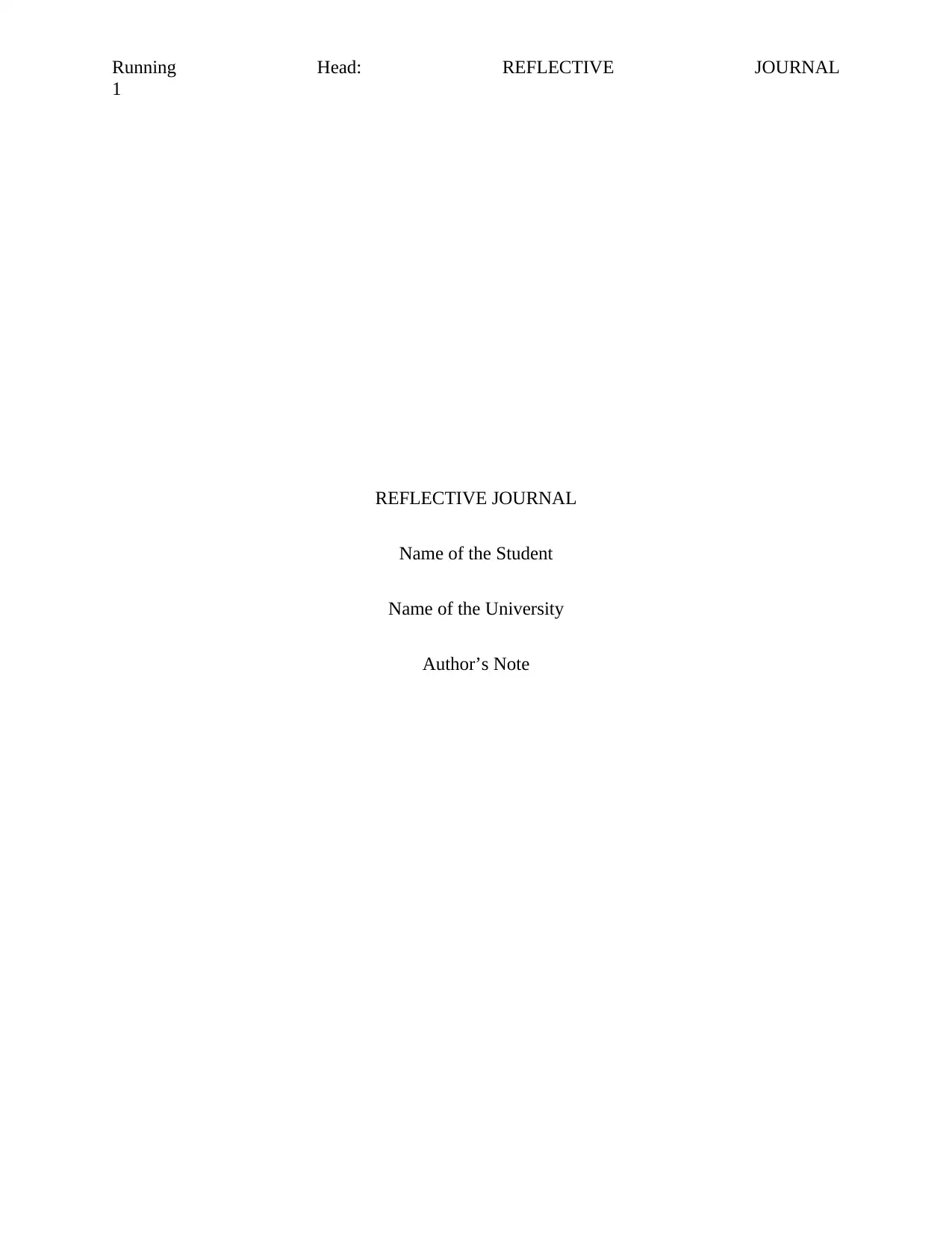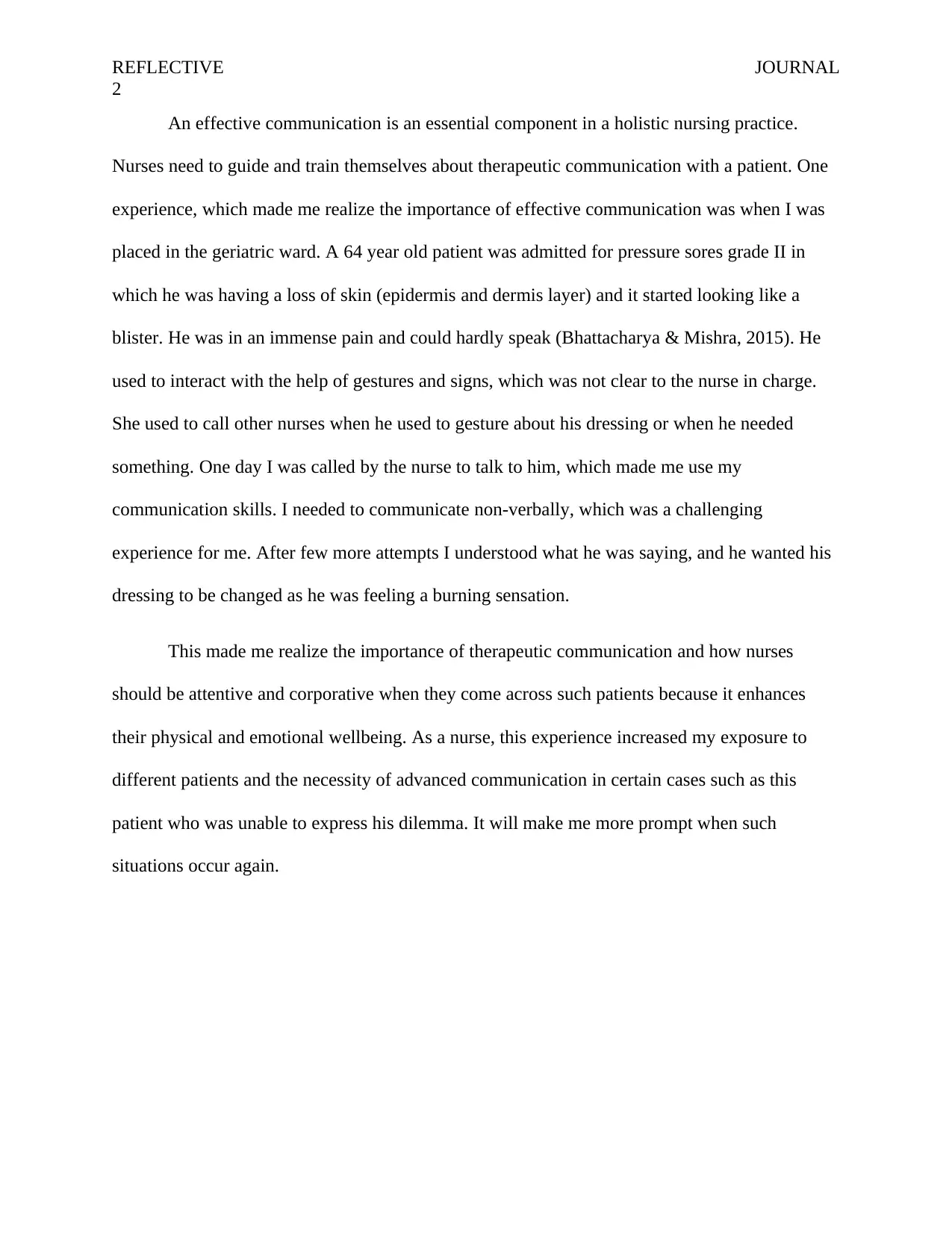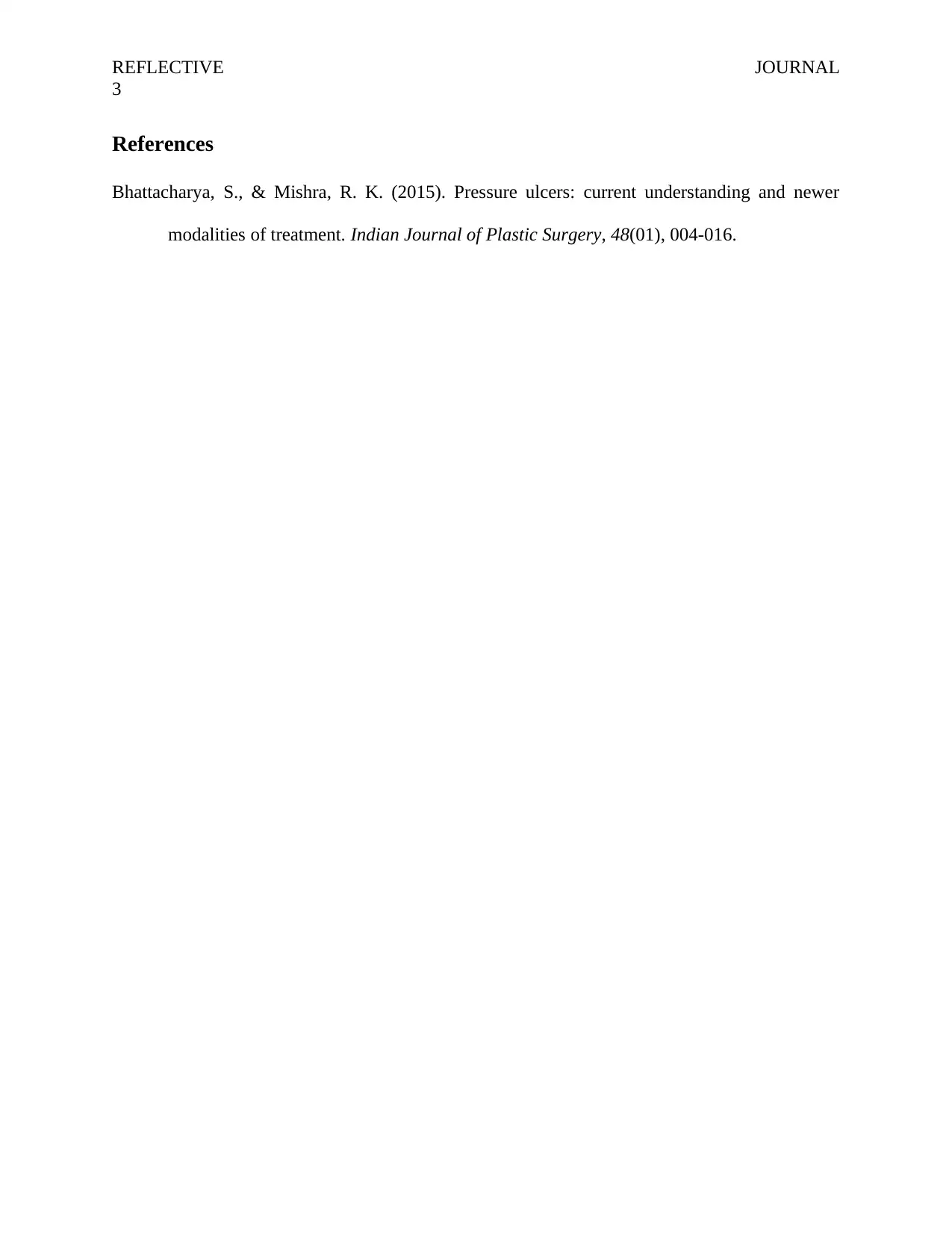Reflective Journal: Effective Communication in Nursing Practice
VerifiedAdded on 2022/08/15
|3
|344
|13
Journal and Reflective Writing
AI Summary
This reflective journal analyzes the importance of effective communication in nursing practice through two distinct experiences. The first experience focuses on a patient with a pressure sore who primarily communicated non-verbally, highlighting the need for attentive observation and the significance of therapeutic communication to understand and address the patient's needs. The second scenario discusses a language barrier with an Arabic-speaking patient in a prenatal care unit, underscoring the challenges of communication in diverse healthcare settings and the importance of finding appropriate solutions, such as interpreter services, to ensure quality care and patient satisfaction. Both experiences emphasize the need for nurses to adapt their communication skills, be aware of potential barriers, and provide patient-centered care. The journal reflects on how these experiences have shaped the author's understanding of communication's role in improving patient outcomes and the overall quality of care in healthcare settings.
1 out of 3










![[object Object]](/_next/static/media/star-bottom.7253800d.svg)